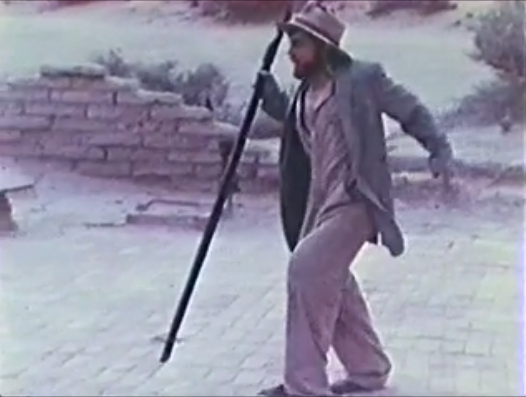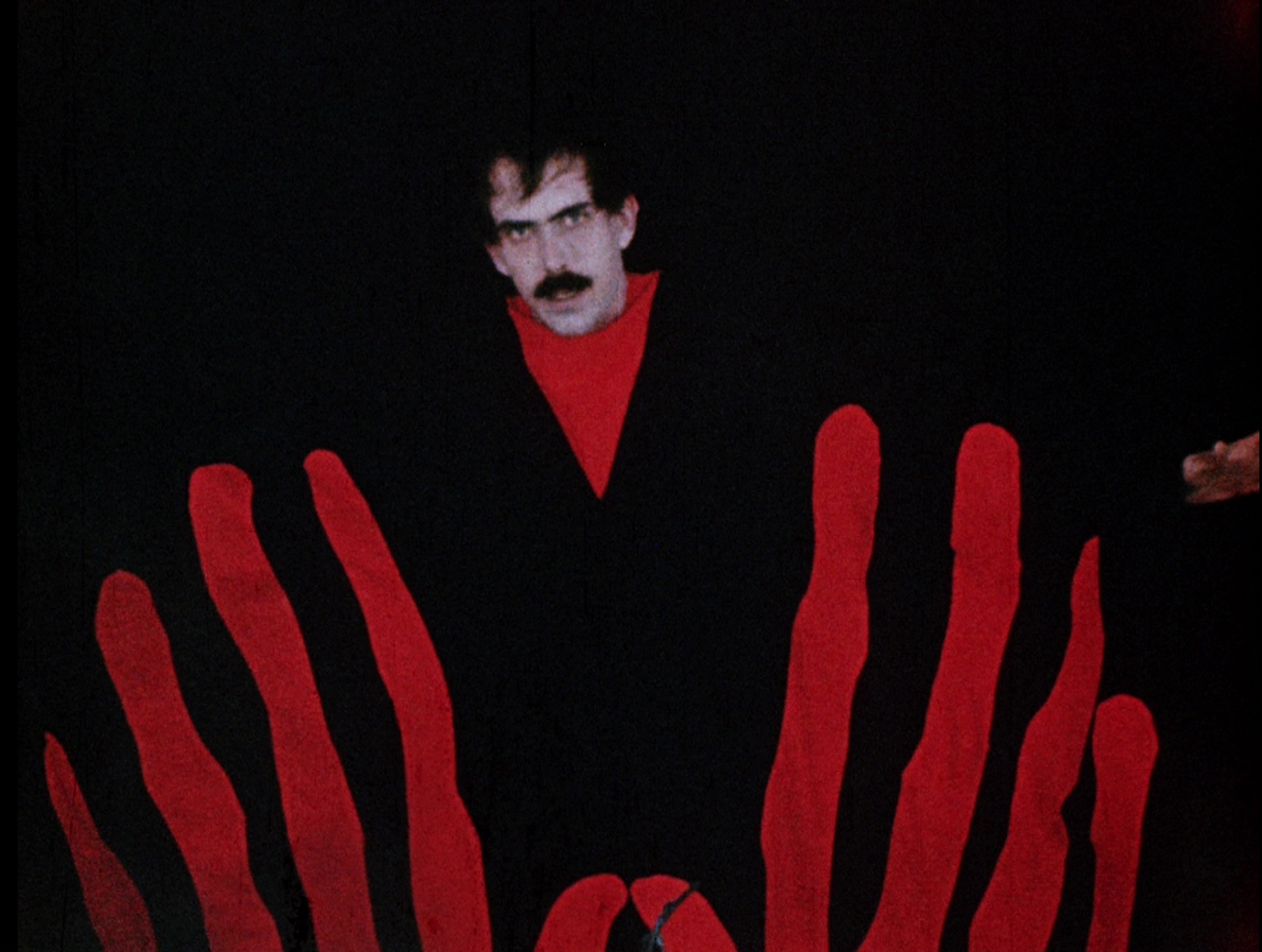Manos: The Hands of Fate and the Horror Monomyth
...the manosmyth if you will




Guys, I love
bad movies. Like, really bad movies. Bizarre dialogue, chronic overacting,
chronic underacting, visible set errors, police officers scratching their heads
with prop guns – I love it all. I’ve been watching a hearty stack of some of
the worst films ever made this summer and amongst the suffering I have stumbled
upon a treasure, my pick for the worst film of all time:
Manos:
The Hands of Fate
Made in 1966
by El Paso insurance salesman Harold P. Warren on a bet, Manos is special because not only does it have the script and
acting problems we expect from terrible movies, it shows supreme incompetence
at the most technical levels of making a motion picture. In part due to the
dirt poor budget and having to rent all the equipment etc. etc. only about
thirty seconds of footage could be shot at one time and everything had to be
dubbed in later by a handful of actors. This leads to painfully long reaction
shots, conversing characters being obviously dubbed by the same actor, and an
infamous line delivered in broad daylight about how it’ll be dark soon. It’s
this failure to understand on even a basic level how to make a film that really
elevates the viewing experience.
Seriously
guys, I watched this twice within twenty-four hours, once by itself, then again
with the famous MST3K commentary track.
Here are some
of the delights that await you if you choose to undertake Manos: The Hands of Fate:
·
The deformed legs of nefarious
henchman, Torgo: either because he was supposed to be his satyr and screwed up
his prosthetics, or because, for originality’s sake, he had hunchlegs instead
of a hunchback. While I have a slight preference towards satyr, because his
satyrdom is never mentioned in the dialogue, neither inspires much faith in the
competence of the production team.

·
Spoiler alert – when Torgo’s
Master orders him killed, the Masters’ brides just kind of massage his face for
a while.
·
Said brides also have an
interminably long cat fight on what looks like some kind of beach that has just
randomly appeared in their lair.
·
Torgo’s attempt at making a pass
involves attempting to caress a woman’s hair and failing. This is definitely
disconcerting but also suggests some really limited motor skills on Torgo’s
part. He also regularly has trouble walking, on account of his knees. I at one
point mistook his attempts to walk for a cultish dance.
·
After fleeing the house of
terror, our protagonists return to
the house of terror because that’s the
last place the villains would look for them. This doesn’t work out, like,
not even for two seconds.
·
We’re not even getting into the
many shots of a couple in a car making out that fail to serve the plot, and a
duo of comedy cops who decide not to investigate the sound of a gunshot because
they think it probably happened in Mexico.
Anyone who’s
seen a horror movie, read a Wikipedia plot summary, or is even just vaguely
aware of the concept of the horror genre will experience deja-vu from a Manos plot summary. A “wholesome
American family” – Michael, Margaret, and tiny daughter Debbie – is off on
vacation somewhere in Texas. Instead of finding their hotel (or maybe it is their hotel, it’s unclear), they
discover a building guarded by the hump-kneed Torgo. For no apparent reason,
they decide to stay in this sketchy establishment, which turns out to be run by
the mustachioed, caped Master, who hibernates with his harem of unsexy brides.
The Master wants to incorporate his female visitor into his polygamous family
and sacrifice her husband, but no one can decide what to do with the kid,
sparking a cat fight that takes up a really unnecessary fraction of the run
time. Our All-American cuties try to escape only to be captured by their own
stupidity, while Torgo and the oldest bride are sacrificed (maybe?). Hubby
replaces Torgo, while his wife and daughter become brides. The end(?)
Watching Manos once, and then watching it again,
and honestly watching it a third time sometime in the next month or so, I was
reminded a lot of things. Stumbling upon a sketchy house in the middle of Texas
inevitably brings to mind that
other scary movie that happened in Texas (and
just
keeps
happening).
Manos also bears an uncanny
resemblance to the Rocky Horror Picture
Show – the deformed manservant (Riff-Raff) welcomes a Wholesome American
Family (mercifully sans kid this time) to the house of his decadent “master”
(Frank’N’Furter) and the “masters” infighting lovers (everyone else?). Forced
to stay the night for more plausible reasons, they are seduced by the Master
who tries to get them to join his household. There’s even a close-up of Janet
calling her fiancé’s name while swishing her hair around which is
extraordinarily similar to a shot of Margaret doing the exact same thing. Could
Manos have been an influence on all
this?
Probably not.
Though Manos premiered in 1966 to the
amusement of the locals and no profit whatsoever, it was swiftly forgotten
until a tape of it found its way to the madmen at Mystery Science Theater 3000. After weeping at what Hal Warren hath
wrought, they gave it the snarky commentary treatment, and it’s arguably their
most popular episode. Salvaging Manos from
the trash heap of history and welcoming it to its true place atop the garbage
bin of glory is probably their greatest contribution to cinema. But that wasn’t
until 1993, well after Leatherface,
Frank’N’Furter, Satanic Panic, and everything else that seems to have Manos’
red hands all over them.
This coincidence
is, of course, because Manos is
derivative, plagiarized from the exact kind of movie that Rocky Horror is parodying and that Texas Chainsaw actually has some of its roots in. But it’s derived
so broadly and incompetently from these storylines that it can actually tell us
a lot about them. When I say “this kind of film,” I mean a particular story
type, intensely popular in the sort of Universal and Hammer Horror movies that
gave birth to Rocky Horror. Less
popular today, it still survives in its bastard descendents: franchises and
movies like Texas Chainsaw. Horror
movies ~love~ story types. It’s why horror cinema is so inclined to
intertextuality, self-awareness, and parody, and why it rewards the same kind
of intellectual inquiry often applied to folklore.
The story type
aped by Manos involves a degree of
travel into some kind of unsafe geographical location. In the era of classic
horror, Eastern Europe was the most popular choice because much of the literary
and folkloric source material came from there, but the plot could be airlifted
to such locales as Egypt,
Wales,
or Haiti
if the plot called for it. Our heroes, typically a male adventurer either
American or English, or at least accented as such, sometimes accompanied by a
love interest, arrives in the exotic land. There he encounters the
superstitions of the foolhardy locals, which turns out to be justified, and discovers
some decadent evil, which seeks to break up the happy (hetero)normality of the
heroes, by going after the heroine, manifesting unrestrained desire, or just by
turning up at an inopportune time. Usually, evil is happily defeated by the
forces of rationality but Manos, in
the willful stupidity of its’ characters, chooses a more nihilistic ending and
implies that the cycle begins again. In this way, it awkwardly presages the
rules of the later horror franchises, where the monster cannot be defeated but
only escaped and endured.
What I’ve just
described is of course just a loose generalization and, like any fairy tale,
there’s a lot of fun in looking into the different variations. (Why, for
example, in many Draculas is it the corruptible Renfield who journeys to
Dracula’s castle and not the innocent Jonathan Harker). Manos is fascinating because it’s such a pure encapsulation of the
basic storyline, without any embellishment or specificity. Take the film’s
principle villain, for example. It’s never clear if the Master is some kind of
proto-Manson cultist, Satan worshipper, or straight-up vampire. The god he
worships is called Manos, which as you may know is Spanish for hands, something
the Texan cast and crew really must have known and decided was totally fine.
Anyway, it doesn’t matter what his deal is; he’s an amalgamation of evil
tropes. He worships some ambiguous non-Christian faith and lives in a
non-traditional family structure, childless with a harem of brides. (The brides
detail is almost certainly nicked from Dracula).
This presents him as a foil or antithesis to the normalcy of Michael, Margaret,
and Debbie. The Master seeks not to destroy their normalcy but to incorporate
them into his cultish way of life. In this story type, monsters are often
contagious – Dracula makes more vampires, werewolfism is spread with a bite,
lovely women can become zombies. These stories are about not only a fear of the
other, but a fear of becoming the
other. The other is regularly pretty sexy; unfortunately, in Manos, any sexiness potential is foiled
by the Master’s deeply unfortunate moustache.

Manos doesn’t just
presage the pessimistic endings of many a modern horror movie. It also
anticipates a change in location. Certainly not all early twentieth-century
horror movies feature foreign horrors – there are domestic madmen and serial
killers too – but they’re certainly outnumbered in popularity and impact. But
starting around, let’s say, 1960, protagonists could encounter monsters without
a passport, by heading deep in the
heart of darkest America. Thus, Marion Crane discovers a
sort of miniature
Gothic castle behind an ordinary motel in Arizona. The most obvious descendent of these
spooky travelogues of old, in my opinion, is the “evil redneck” subgenre
popularized in the 1970s and set in such exotic locales as such rural Georgia,
rural
Nevada, and, most famously, Texas.
In these films, all that was implied in their Hays Code era predecessors is revamped for a jaded audience. The implied seduction and sexual predation of
Dracula, or the potential sexual threat of the wolf, becomes rape. The tasteful
cannibalism of blood-sucking becomes elaborate cannibal feasts. The violence is
upped to levels that still have the power to shock. And of course, the fear is
no longer that someone sinister may be lurking out there, in a foreign land, but that something far worse is
waiting in the quintessential Americana scene of the farm, the desert, or the
countryside. In 2018, when think pieces and documentaries and great big books try
to understand how whole swaths of America became strangers to one another,
(whether or not that’s actually the case), the fear that we don’t actually know
or understand our own massive country feels very, very familiar. I can’t give Manos any credit for that innovation –
its shot in Texas not because the creative team guessed that America could be a
scary place, but because shooting in their own hometown was a lot cheaper than
building a set or buying a plane ticket. But, in its own incompetent, awkward
way, it bridges the gap between two very different variations of the same
nightmarish fairy tale.


Comments
Post a Comment